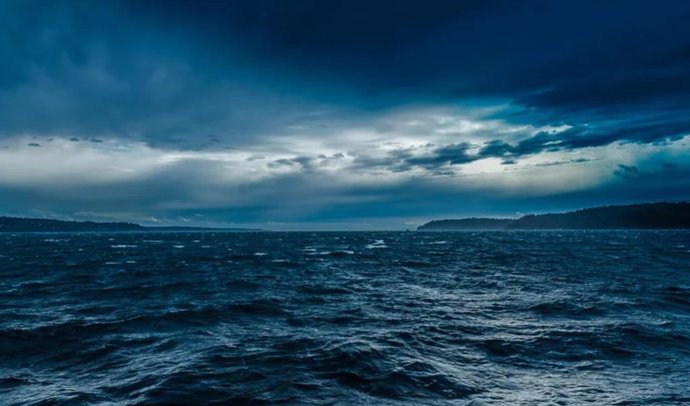The iron contained in the dust carried from the Sahara Desert acts as a fertilizer – FRONTIERS
September 20 () –
Iron transported in Sahara Desert dust can have a major impact on life over long distances, acting as fertilizer in the ocean.
American scientists measured the relative amounts of “bioreactive” iron in four sediment cores from the bottom of the Atlantic. They demonstrated for the first time that The more dust that is carried from the Sahara, the more iron becomes bioreactive through chemical processes in the atmosphereThese results have important implications for our understanding of the growth-promoting effect of iron on ocean phytoplankton, terrestrial ecosystems, and the carbon cycle, even under conditions of global change.
Iron is an essential micronutrient for life.which enables processes such as respiration, photosynthesis and DNA synthesis. Iron availability is typically a limited resource in today’s oceans, meaning that increasing the flow of iron into them can increase the amount of carbon fixed by phytoplankton, with consequences for global climate.
Iron ends up in oceans and terrestrial ecosystems through rivers, melting glaciers, hydrothermal activity and, especially, wind. But not all of their chemical forms are “bioreactive,” meaning they are available for organisms to absorb from their environment.
“Here we show that iron bound to Saharan dust blowing westward over the Atlantic has properties that change with distance traveled: the greater the distance, the more bioreactive the iron,” he said. in a statement Dr. Jeremy Owens, associate professor at Florida State University and co-author of a new study in Frontiers in Marine Science.
“This relationship suggests that the Chemical processes in the atmosphere convert less bioreactive iron into more accessible forms.“.
Owens and colleagues measured the amounts of bioreactive and total iron in drill cores from the bottom of the Atlantic Ocean, collected by the International Ocean Discovery Program (IODP) and its previous versions. The IODP aims to improve our understanding of climate change and ocean conditions, geological processes, and the origin of life. The researchers selected four cores, depending on its distance from the so-called Sahara-Sahel Dust Corridor. The latter extends from Mauritania to Chad and is known to be an important source of dust-bound iron for downwind areas.
The two cores closest to this corridor were collected approximately 200 and 500 km west of northwestern Mauritania, a third in the mid-Atlantic, and the fourth approximately 500 km east of Florida. The authors studied the upper 60 to 200 meters of these cores, reflecting deposits from up to the last 120,000 yearsthe time elapsed since the last interglacial period.
They measured total iron concentrations throughout these cores, as well as iron isotope concentrations with a plasma mass spectrometer. These isotopic data were consistent with Saharan dust.
They then used a set of chemical reactions to reveal the fractions of total iron present in the sediments in the form of iron carbonate, goethite, hematite, magnetite and pyrite. The iron in these minerals, although not bioreactive, It probably formed from more bioreactive forms through geochemical processes on the seafloor.
“Rather than focusing on total iron content, as has been done in previous studies, we measured iron that can be readily dissolved in the ocean and accessed by marine organisms for their metabolic pathways,” Owens said.
“Only a fraction of the total iron in sediments is bioavailable, but that fraction could change during transport of iron away from its original source. Our goal was to explore those relationships.”
THE FURTHER THE MORE BIOREACTIVE
The results showed that the proportion of bioreactive iron was lower in the westernmost cores than in the easternmost ones. This implied that a correspondingly higher proportion of bioreactive iron had been lost from the dust and presumably used by organisms in the water column, so it had never reached the bottom sediments.
“Our results suggest that during long-range atmospheric transport, the mineral properties of originally non-bioreactive dust-bound iron change, making it more bioreactive. “This iron is absorbed by phytoplankton before it can reach the bottom”said Dr. Timothy Lyons, a professor at the University of California, Riverside and senior author on the study.
“We came to the conclusion that the dust that reaches regions such as the Amazon basin and the Bahamas may contain iron that is particularly soluble and available to lifedue to the great distance from North Africa and therefore longer exposure to atmospheric chemical processes,” Lyons said.
“The transported iron appears to be stimulating biological processes in the same way that iron fertilization can affect life in the oceans and on the continents. This study is a proof of concept that confirms that “Iron bound to dust can have a major impact on life at great distances from its source.”








![[Img #74678]](https://thelatestnews.world/wp-content/uploads/2024/12/See-schizophrenia-and-bipolar-disorder-in-face-shape-150x150.jpg)


![[Img #74678]](https://thelatestnews.world/wp-content/uploads/2024/12/See-schizophrenia-and-bipolar-disorder-in-face-shape-300x200.jpg)


Add Comment